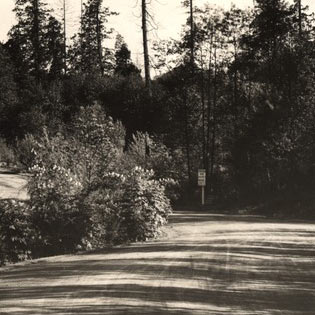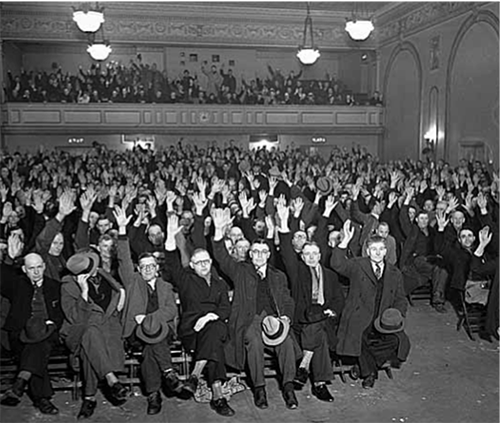GRADE 4
Curriculum Units and Materials |
|
|---|---|
GEOGRAPHYWhat Makes Washington Unique?Unit 1 Olmsted Parks and Boulevard System: Students will learn about Seattle's Olmsted Parks and Boulevards System. They will use selected primary and secondary sources to identify which of Puget Sound's natural resources played a significant role in Olmsted's plan for the parks and boulevards. Unit 2 Natural Resources: Students will analyze the importance of this state's natural resources to those who chose to live and work here. Students will use maps, timelines, and online research to examine why transportation played a significant role in allowing people to reach and use this region's natural and human-made resources. | 
Intersection of Interlaken and Washington Park (later Lake Washington) boulevards, 1911. Photo by Webster & Stevens. Courtesy Seattle Municipal Archives, Item No. 29378. |
| Download Entire Curriculum Unit and Materials zip file - Unit 1 (zip 3.4 mb) Download Entire Curriculum Unit and Materials zip file - Unit 2 (zip 799kb) | |
| DOWNLOAD INDIVIDUAL FILES: UNIT 1 | |
| CURRICULUM: Unit 1: Olmsted Parks and Boulevards (pdf 1.2mb) | |
| ELEMENTARY ESSAY: ELEMENTARY ESSAY #1: Olmsted Parks in Seattle (pdf 269kb) | |
| DOCUMENTS: DOCUMENT #1: Olmsted Documents (pdf 79kb) | |
| PHOTOS: PHOTOS #1 (pdf 915kb) | |
| PHOTOS #2 (pdf 618kb) | |
| MAPS: MAP #2: World Map (pdf 53kb) | |
| MAP #3: Lake Washington area marked with Native American villages (pdf 67kb) | |
| MAP #4: Transportation Corridors (pdf 137kb) | |
| WORKSHEETS: WORKSHEET #2: Using Primary and Secondary Sources as Tools for Finding Interesting Historical Details About Your City or Neighborhood (pdf 64kb) | |
| OSPI Standards and Assesments: CBA: Dig Deep: Analyzing Sources: EALRs: Environmental and Sustainability Standards, Geography, History, Reading, Social Studies | |
| DOWNLOAD INDIVIDUAL FILES: UNIT 2 | |
| CURRICULUM: Unit 2: Natural Resources (pdf 258 kb) | |
| ELEMENTARY ESSAYS ELEMENTARY ESSAY #1: Olmsted Parks in Seattle (pdf 269kb) | |
| DOCUMENTS: DOCUMENT #1: Olmsted Documents (pdf 79kb) | |
| WORKSHEETS: WORKSHEET #3: Using the Environment to Meet Needs and Wants (pdf 54kb) | |
| WORKSHEET #4: When Different Groups Came to Live and Work in the SR520 Project Region (pdf 58kb) | |
| WORKSHEET #5:Transportation Options for Crossing the Lake - Timeline (pdf 67kb) | |
| WORKSHEET #6: Using Primary and Secondary Sources as Tools for Finding Interesting Historical Details About Your Neighborhood(pdf 55kb) | |
| OSPI Standards and Assesments: CBA: Humans and the Environment EALRs: Reading, Social Studies, Science | |
CIVICSHow Can Citizens Make a Difference in Matters That Affect Their Neighborhoods?Students will identify current issues that impact the lives of those who live in the Lake Washington area. Using a set of primary sources provided, students will research multiple perspectives on this issue and choose a personal stand. Students will defend both their individual views on this issue and the credibility of their resources. | 
WPA workers vote to strike inside Eagles Hall, Seattle, 1937. Courtesy Museum of History & Industry. |
| Download Entire Curriculum Unit and Materials zip file(zip 1.9 mb) | |
| DOWNLOAD INDIVIDUAL FILES | |
| CURRICULUM: How Can Citizens Make a Difference in Matters That Affect Their Neighborhoods? (pdf 225kb) | |
| DOCUMENTS: DOCUMENT #2: Newspaper Articles (pdf 1.38 mb) | |
| MAPS: MAP #4: Transportation Corridors (pdf 137kb) | |
| WORKSHEETS: WORKSHEET #9: How Citizens Address Challenges that Face our Nation Today (pdf 58kb) | |
| OSPI Standards and Assesments CBA: You Decide EALRs: Reading, Social Studies |
HISTORYWhat Can History Teach Us About the World Today?Students will analyze how the environment and natural resources of Lake Washington have been utilized over the past 200 years. Using maps and timelines, students will examine how crossing Lake Washington has influenced the lives and cultures of those who lived in this region. | 
Steamer Fortuna, ca. 1906. Courtesy Museum of History & Industry |
| Download Entire Curriculum Unit and Materials zip file (zip 891kb) | |
| DOWNLOAD INDIVIDUAL FILES | |
| CURRICULUM: What Can History Teach Us About the World Today? (pdf 201kb) | |
| ELEMENTARY ESSAYS: ELEMENTARY ESSAY #3: Living and Working on the Lake - PRE 1850 through 1916 (pdf 204kb) | |
| ELEMENTARY ESSAY #4: Transportation and the Lake - PRE 1850 through 1916 (pdf 169kb) | |
| MAPS: MAP #3: Lake Washington area marked with Native American villages (pdf 67kb) | |
| MAP #4: Transportation Corridors (pdf 137kb) | |
| WORKSHEETS: WORKSHEET #3: Using the Environment to Meet Needs and Wants (pdf 54kb) | |
| WORKSHEET #4: When Different Groups Came to Live and Work in the SR520 Project Region (pdf 58kb) | |
| WORKSHEET #5:Transportation Options for Crossing the Lake - Timeline (pdf 67kb) | |
| OSPI Standards and Assesments CBA: What’s the Big Idea? EALRs: Reading, Social Studies |